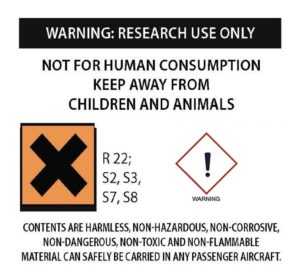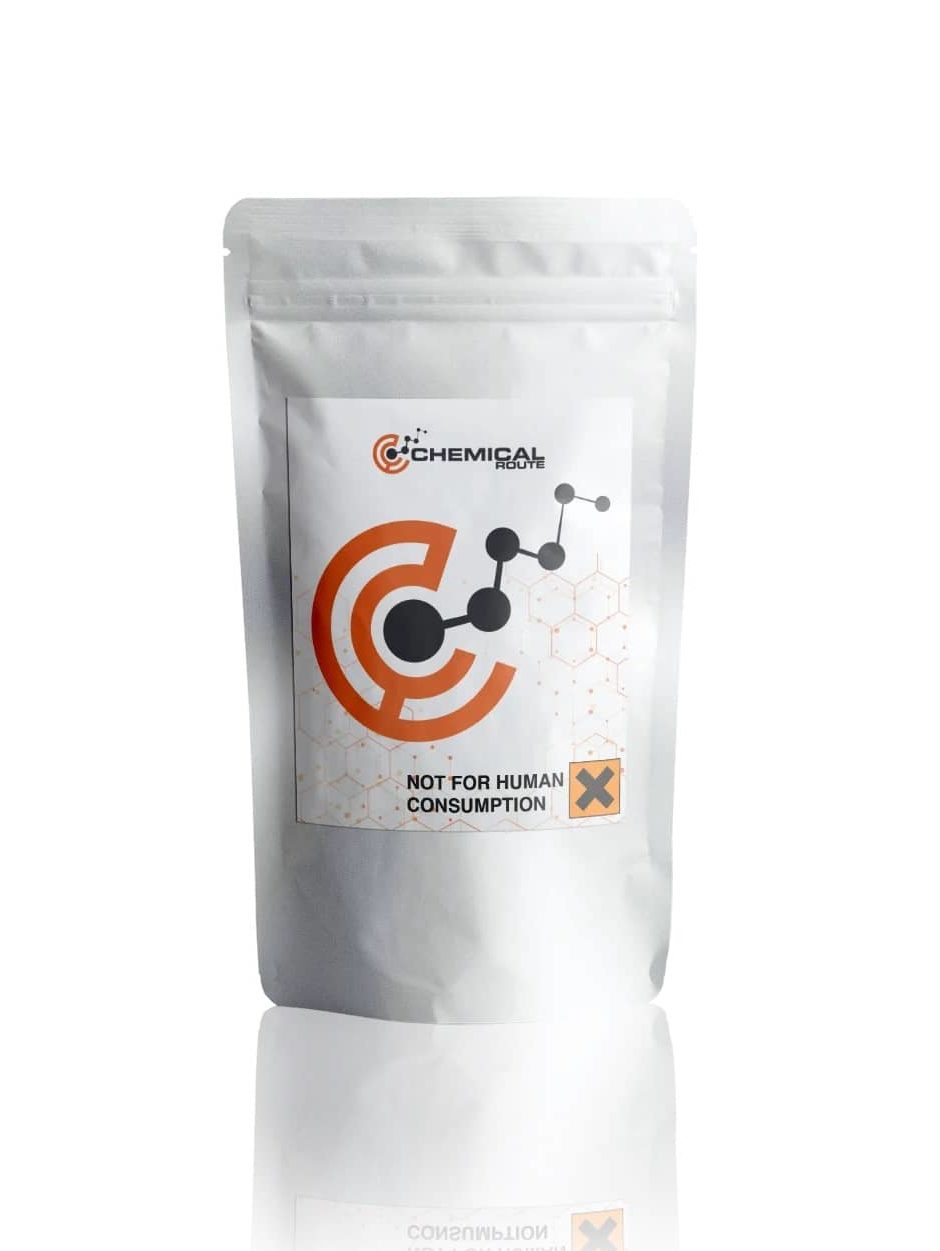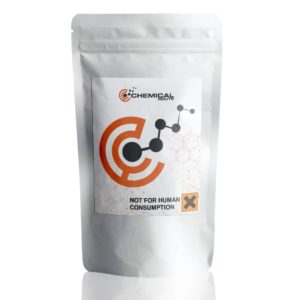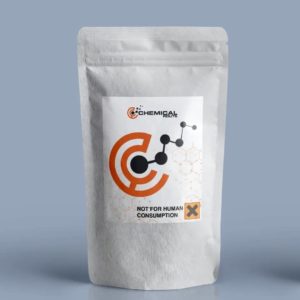Description
Bromo-DragonFLY, 3C-Bromo-Dragonfly, DOB-Dragonfly
Product information
IUPAC-name 1-(4-Bromofuro[2,3-f] [1]benzofuran-8-yl)propan-2-amine
Synonyms Bromo-DragonFLY, 3C-Bromo-Dragonfly, DOB-Dragonfly
Formal name 8-
Cas number 219986-78-4
Formula C13H12BrNO2 • HCl
Formula Weight 330.6
Purity 99.0 % min.
Formulations A neat solid, Powder
Solubility
- DMF: 1 mg/ml
- DMSO: 5 mg/ml
- DMSO:PBS(pH7.2) (1:1): 0.5 mg/ml
Bromo-DragonFLY, 3C-Bromo-Dragonfly, DOB-Dragonfly
The substance known as Bromo-DragonFLY is a potent hallucinogen that has a high potency and a long duration of action. It is also known to have a stereocenter. This makes it an active member of the phenethylamine family. It has a normal dose of around 200 g to 800 g, and it can last for several days.
It is a novel psychoactive substance that can be used in combination with other drugs such as amphetamines and benzodiazepines. It can also produce an incredibly potent and dose-sensitive effect when administered. The first known production of this substance was in 1998.
Matthew Parker, a graduate student at the University of California, created the substance by synthesising it in the laboratory of David Nichols, a professor of chemistry. Like the other dihydrofuran compounds that were originally named FLY, the name of Bromo-DragonFLY was derived from its superficial resemblance to a dragonfly.
More to Learn About Bromo-DragonFLY
A potent and unusual psychoactive substance known as Bromo-DragonFLY can cause users to experience severe effects for up to several days. It is said to have a third the potency of LSD and is incredibly potent relative to other psychedelics.
Due to its unpredictable nature and high potency, it can be difficult for people who are not used to hallucinogenic substances to use it safely. This is why it is advised that users start at the lowest possible dosage and avoid re-dosing it at any point. Also, given that the exact duration and dosage of this substance have not been determined, it is advised that users start taking it through the oral route.
Due to the lack of information about the effects of Bromo-DragonFLY on humans, it is not possible to determine its exact effects. In 2010, it was briefly used in research chemicals. However, several deaths occurred after the drug was mistakenly labeled as 2C-B-FLY.
Although it has not been sold on the street, the production of research chemicals that were made with this compound has stopped. Due to its novelty and short history of human use, it is strongly advised that users strictly follow safety precautions when taking this substance.
Chemistry
The first racemic brome-DragonFLY was produced by David Nichols in 1998. It was an expansion of his earlier work on the tetrahydrobenzodifurans analogue of dob. The process started with hydroquinone, which is then dialkylated with 1-hydro-2-chloroethane and n-butyllithium. After formiclation of the ring system, a nitropropene derivative was produced by combining the two compounds under ammonium acetate catalysis.
The precursor for the brome-DragonFLY was reduced using lithium aluminum hydride. After para-bromating the tetrabenzodifuran ring system with bromine, the trifluoroacetyl group was removed to allow the brome-DragonFLY to be a racemic mixture of the S and R enantiomers.
In 2001, David Nichols reported the synthesis of brome-DragonFLY, which allowed the study of the individual S and R enantiomers. After further research, it was discovered that the brome-DragonFLY has a stronger binding affinity to the 5-HT2A and 5-HT2C receptors.
The R enantiomer was synthesized by reacting D-alanine with 2,3,6,7 tetrahydrobenzodifuran in a Friedel-Crafts acylation. An intermediate containing a -keto moiety was then produced. After the ring system was deprotected with DDQ, the amine was then decontaminated and yielded the R-(-)-Bromo-DragonFLY.
Phenethylamine, amphetamine, and benzofuran derivatives, such as Bromo-DragonFLY, are structurally similar to phenethylamines. It features a benzene ring bound to an NH2 amino acid through an ethyl chain, and it also contains bromine, which is attached to carbon R4. Compared to other psychedelic phenethylamines, Bromo-DragonFLY exhibits a distinct molecular structure. It is also an atypical D-type analogue of the dob.
DragonFLY compounds are phenethylamine derivatives that have an insect-like appearance. They have two furan rings that are fused together on the opposite side of a benzene ring.
It is important to note that the R-isomer of the compound is more active than that of the other compounds. To ensure that the correct dose is administered, it is necessary to adjust the doses.
Pharmacology
The effects of bromo-DragonFLY are mediated by its 5-HT2A serotonin receptor agonist activity. It has a high binding affinity for both the 5-HT2B and 5-HT2C receptors, and it is regarded as a non-selective 5-HT2 agonist.
The drug Bromo-DragonFLY has a high binding affinity for both 5-HT2B and 5HT2C serotonin receptors. It is also a non-selective 5-HT2 agonist, which makes it more potent than 5-HT2A. It has a lower selectivity for 5-HT2B than for 5-HT2A. Its ability to inhibit the deamination of 5-HT additionally increases its risk profile.
It has been suggested that the activity of bromo-DragonFLY almost completely stops the activity of the MAO-A receptor. This could explain the abnormal duration of action exhibited by the drug. The exact role of these interactions in the development of psychedelic effects is still unclear.
The toxicological and physiological properties of this compound has not been analyzed. Usage of this Chemical should be for research and forensic purposes only.
WARNING This product is not for human or veterinary use.

This product is only available to persons of 21 years old and above.
Hazard statement(s)
| H302 | Harmful if swallowed |
| H315 | Causes skin irritation |
| H319 | Causes serious eye irritation |
| H332 | Harmful if inhaled |
| H335 | cause respiratory irritation |
| H336 | cause drowsiness or dizziness |
| Precautionary statement(s) | |
| P264 | Wash hands thoroughly after handling |
| P280 | protective gloves/protective clothing/eye protection/face protection |
| P305 + P351 + P338 | IF IN EYES: Rinse cautiously with for several minutes. Remove contact lenses, if present and easy to do. Continue rinsing. |
| P337 + P313 | If eye irritation persists: Get medical advice/attention |
| P261 | Avoid breathing dust/ fume/ gas/ mist/ vapors/ spray |
| P271 | Use only outdoors or in a well-ventilated area |
| P304 + P340 | IF INHALED: Remove victim to fresh air and keep at rest in a position comfortable for breathing |
| P312 | Call a POISON CENTER or doctor/physician if you feel unwell |
| P403 + P233 | Store in a well-ventilated place. Keep container tightly closed |
| P405 | Store locked up |
| P501 | Dispose of contents/container to a licensed disposal company |




Reviews
There are no reviews yet.